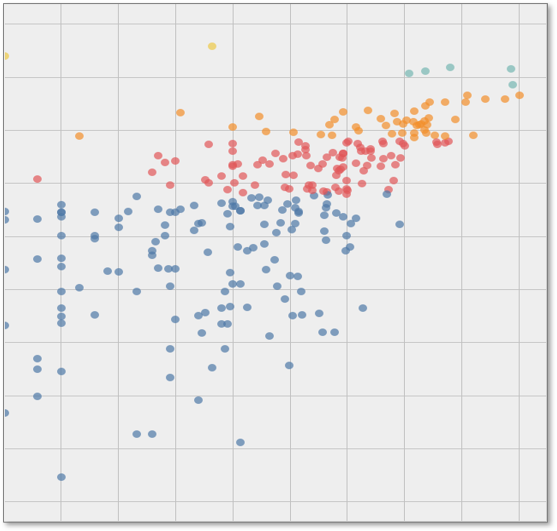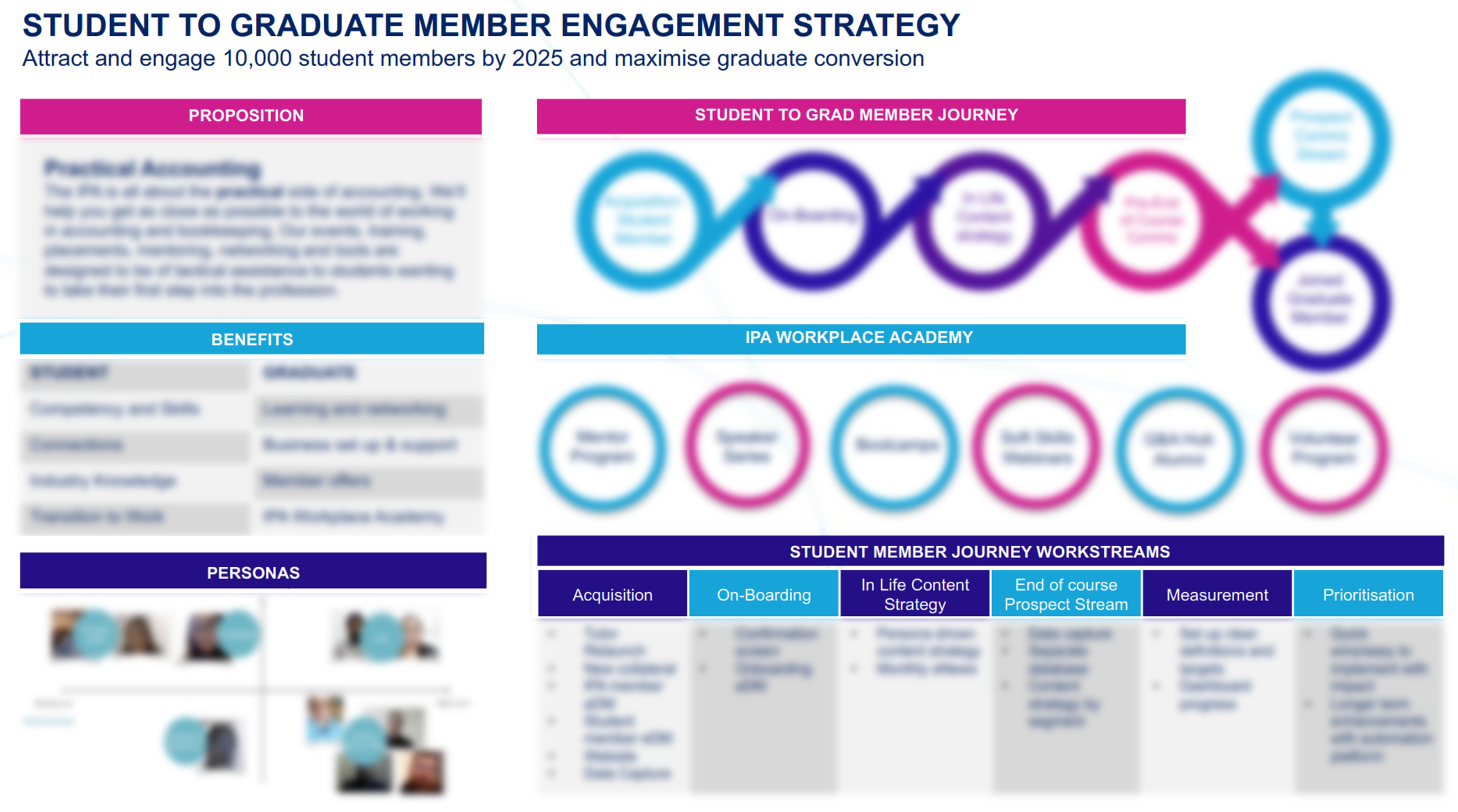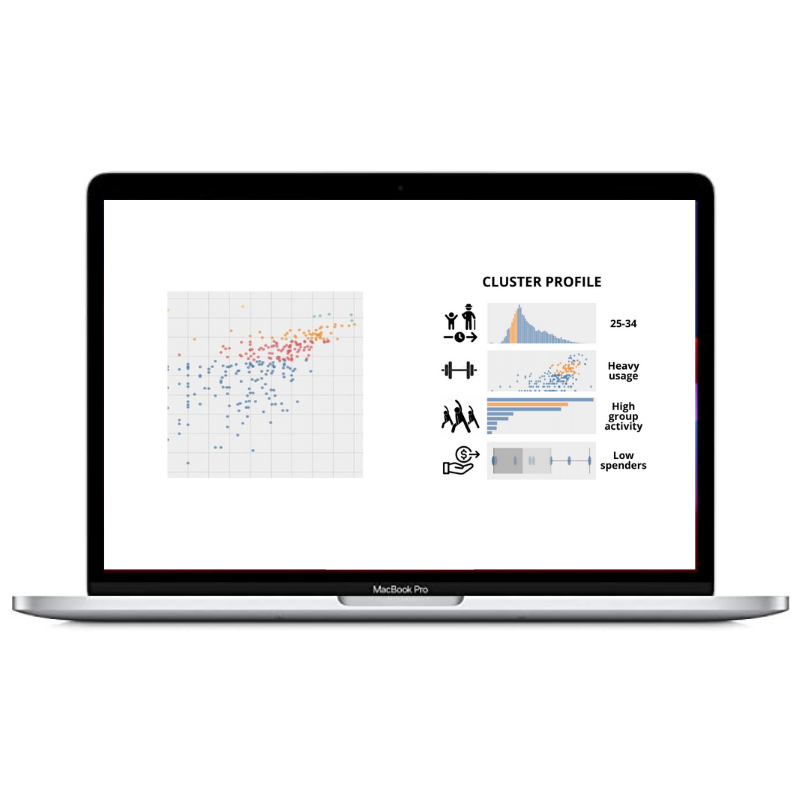Data & Research driven segmentation
Overview
The Institute of Public Accountants (IPA) is the leading Australian accounting body dedicated to the SME sector, representing over 46k+ members across all stages of their careers and business life.
They currently have a sizeable student database, however, as it is free to sign up for basic passive membership, encouraging accounting students to convert into a paid membership has always been challenging.
The problem
The IPA wanted to develop a strategy to transition more accounting students from passive to active membership, repositioning IPA as a valued component of their professional career development.
Students are the future lifeblood of IPA, becoming the next generation of advocates and active members. A dedicated strategy will help increase their understanding of student members, while delivering deeper engagement, showcasing the benefits of membership and increasing the conversion to paid membership.
The solution
As with most business challenges today, uncovering the right solution begins with research into the data to gain a full understanding.
White Box is a data science consultancy that takes a collaborative approach when developing tailored solutions. We approached our extensive network and assembled an expert team of market research and marketing consultants to build this IPA strategy based on qualitative research backed by insights from data science.
As a group, we set our focus on understanding these five key fundamentals:
1. What are the different behaviours of our student members?
2. Why did they join?
3. What do they value?
4. What would trigger a deeper engagement with IPA?
5. What would trigger them to pay for membership?
The process
Discovery + data assessment + data analysis
Once we had access to the data, our data team performed a thorough data assessment, understanding field population, missing values, crucial statistics and how data sources can be linked together.
Armed with this baseline information, we cleaned, combined and transformed the data into an analysis base table, which allowed us to perform a number of analytical methodologies.
Our aim was to gain two key insights:
Understanding the characteristics of a student
What engagement leads to a successful conversion into a paid member
These form the basis of building the right strategy.
Customer research
We held three discussion groups over Zoom with the groups running for 90 minutes and comprising of 4 respondents per group. The groups were recruited from the IPA’s member database.
The initial two groups provided insights and the final group helped to verify and validate the thinking, post the data science phase.
The strength of qualitative research is the ability to explore and dig deeper into the issue of low engagement and conversion. As a group, we gave them the opportunity to discuss ideas and brainstorm as a collective. This approach helped deepen our understanding of the barriers and opportunities when it comes to the IPA being considered of value to this younger audience.
Data science (unsupervised machine learning)
The customer research phase provided key insights into driver variables and an initial segmentation framework, which allowed us to build similar features with the data available.
After normalising (eliminating skew) and removing highly correlated variables, we used hierarchical clustering to guide us on the number of clusters and K-Means to perform the analysis.
This was an iterative process with a degree of subjectivity to investigate what would work for the business, while being statistically valid.
We were encouraged by our findings, which showed similar segments arising naturally from the data that aligned with the customer research insights.
Engagement strategy
This final stage combined the data and research insights to map out a holistic Student Member Engagement Strategy.
This included:
Key changes in the membership offering in order to increase appeal to students.
A Student Member Value Proposition that is highly compelling based on the research and data. This will be used for both acquisition and existing student members.
A high-level Customer Journey for the Student Members showing the right comms, messages and channels to use across all stages of the journey.
New data capture opportunities that will enhance future knowledge and profiling.
The results
We provided a comprehensive strategy deck which included:
answers to the five key fundamental questions
a simple viewpoint of the current structure
a member value proposition
student member benefits
graduate member benefits
student personas
marketing comms strategy
channel strategy and measures.
All of this created a framework and effective action plan for The IPA to roll out effectively to address and overcome the original objective.
Key takeaways:
IPA’s target student audience is diverse with a high proportion of TAFE courses and people with life experience.
Current student members are passive and unclear of what IPA offers them.
There is a clear unmet need to help transition from study to the workplace.
There is low conversion to paid membership, with a 4-year lag for those who convert, showing the need to create more value in the early stages.
New Student and Graduate Member benefits to be added to increase work-ready offering.
There are 4 identifiable Personas that IPA can use to increase engagement via more targeted, visually appealing and story-based comms.
A Member Value Proposition of Practical Accounting talks to this need.
A re-launch of the new Value Proposition will increase student members and engagement.
New post-course Prospect Comms will increase conversion to paid membership.
A clear definition of ‘Active’ Student, and other measures that are required moving forward.
Want to know how your business could implement a similar solution? Contact us now to find out more.














